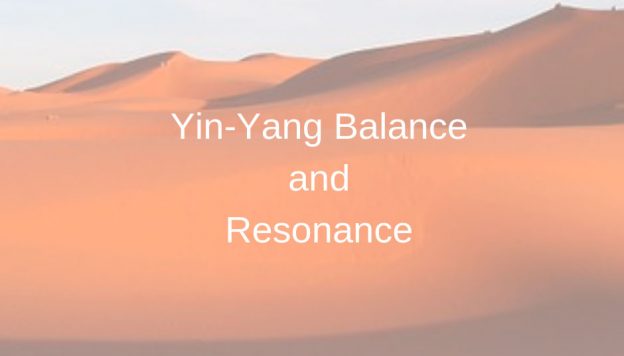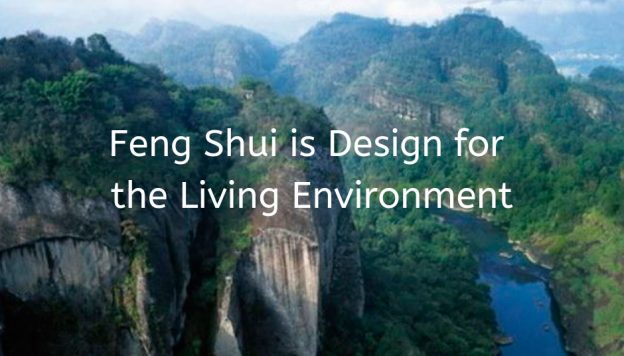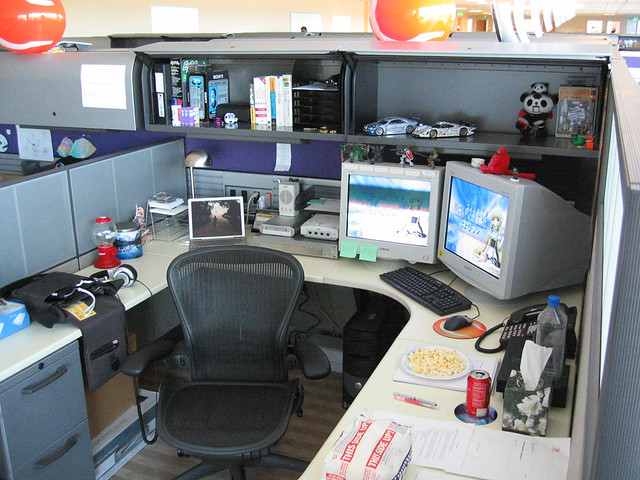Talks on Feng Shui with Dr. Hsu
6: Is Feng Shui a Science?
People often ask: Is Feng Shui a science? How should it be classified? The correct answer is that Feng Shui is a philosophy, science, and art.


6: Is Feng Shui a Science?
People often ask: Is Feng Shui a science? How should it be classified? The correct answer is that Feng Shui is a philosophy, science, and art.

5: Yin Yang Balance and Resonance
In the previous posting (number 4), we mentioned that, in Yin-Yang theory, a combination of Yin and Yang create harmony, while a combination of Yang and Yang, or Yin and Yin, create resonance, which means empowerment.

4: Can the Tao be spoken?
The fifth chapter of the Xi Ci (or Da Zhuan) commentary on the Book of Changes contains a saying, “One Yin and one Yang make the Tao. People use it daily, but do not know it.” Over the centuries, many scholars have tried to explain this saying, but their explanations have been too abstract for most people to understand.

3: Feng Shui and Natural Law
To talk about Feng Shui, we have to talk about natural law, since it is one of the two pillars of Feng Shui.

2: Feng Shui is Design for the Living Environment
When we talk about “designing our environment”, the term “environment” can refer to different scales. It can refer to a city, a neighborhood, a building, or even a room, or the furnishings or decorations within a room.
 We often think of Feng Shui in terms of the environment, what is outside and around us. Even though we may be aware that Feng Shui applies to every level of manifestation, from the smallest to the largest, it is still easy to miss a very important application that is very close to home, each and every person.
We often think of Feng Shui in terms of the environment, what is outside and around us. Even though we may be aware that Feng Shui applies to every level of manifestation, from the smallest to the largest, it is still easy to miss a very important application that is very close to home, each and every person.
Let’s think this through. The two pillars of Form School Feng Shui are Natural Laws and Chi. The basic model for Form School design and analysis is the Four Feature Model. In this model, the core features are called, Mountain, Guardian Hills, Energy Spot, and Water. These four features are metaphors for Support, Protection, Growth and Expansion. Any place w these four features manifest in an energetic and balanced way will have good energy that can nourish a good life.
These four features, when interpreted in terms of the qualities they represent, also indicate the qualities required for any successful human endeavor. For example, a successful business venture will require the following: financial support of a bank or investors as well as the beneficial government policy (Mountain), the legal protection to safeguard against any mistake in operations (Guardian Hills), a good place for growth (Energy Spot), and a vast territory for expansion (Water).
But these features don’t just apply to our activities. They apply to us, every person. In other words, they tell us something about what makes an ideal person. The Mountain is the physical body, the necessary support for all activities. The Energy spot is the heart: love and compassion are central to a good life. The Guardian Hills are work and achievements, which provide sustenance and support. A good heart without work and effective action is like a bird without wings. The Water feature is the goal and purpose of life, which allows for forward and outward expansion.
In other words, ideally a person has a loving and compassionate heart; maintains a strong and healthy body, works well and diligently, and lives a meaningful life following some guiding goal.
Feng Shui is a guide to finding a place that has good energy and nourishes one’s life. But it is also a guide to something even closer: how to become the person that will live that life.

Herman Miller invented the cubicle in 1956, with the idea of creating more privacy and helping to reduce distraction and increase concentration. Since then, the cubicle has become a standard feature of modern office design in the American workplace. Offices designed using this modular unit, often called mouse mazes or cube farms, have become the symbol of human conditioning, and of the reduction of individuality to uniformity and blandness.
One thing we know is that most people do not want to work in a “cube world”. A common report from those working in cubicles is that they find themselves frequently checking the time, anxious for their workday to end so they can get out of the space. After all, a cubicle design is similar to a prison cell. Staring at a partition wall in such close proximity to one’s field of vision, throughout the long work day, replaces feelings of openness and comfort with a sense of being trapped. This feeling, and the resulting impact on creativity, can lead to anxiety and agitation, and even make you feel that you might be going mad. How much of the work-related stress and low productivity of corporate America is due to this working environment? Is this one of the reasons Americans seem to need to work longer hours in the office to finish their work?
Corporations at times try to save money by resisting change that benefit employees. The irony is, such changes in the long term actually benefit the corporation, as they can increase employee productivity, reduce stress levels, and increase overall morale. But often enough, even if a company wants to move away from the cubicle work space; it is hard for most designers to know what to change to.
There have been few attempts to liberate workers from these constricting cell since the cubicle was invented. Most changes have been superficial updates that meet technological and aesthetic advances. Over a decade ago, Knoll took on the challenge of reinventing this modular office unit, and hired a well-known architectural firm to take on the task. However, after two years and millions of dollars spent on research, development, and engineering, they only managed to create a more expensive design that did little to resolve the core issue.
The fundamental reason for this impasse is that industrial designers have not been able to identify the real issue behind the cubicle problem. When you do not feel good in the box, you cannot argue with the feeling. Although the cause may not be clear, the feeling itself is real and valid.
Naturally, when architects, interior designers, and furniture designers make any attempt to “improve” the design, they tend to understand and approach it from a purely physical point of view. As I have often commented, the blind spot for designers throughout history has been that they only see a building or object as a physical body, but not as an energy body – nor as an information carrier. There is much to learn from the wisdom of the traditional Form School feng shui in which all objects and manifestations are seen on all three levels: as a physical body, an energy body, and as an information carrier. Designing with this in mind will naturally create functional, economical and beautiful designs.
God created the human body with a strong spine at the back to hold up the entire body, and with openings in front, such as our eyes, nose, mouth, and ears. Therefore, to live in resonance with our physical body, our living environment should follow this same pattern. In our daily lives, we always feel better when we position ourselves with some protection behind our back with a nice open space in front of us.
Throughout the history of world, people have followed their instincts and built their houses with the backs against a mountain, hill or more protective objects and the front doors facing bodies of water such as rivers, lakes, oceans or facing a nice field or other open space. This is also how we should build our work spaces. The innate flaw of the cubicle office is that it violates this feng shui design principle which is based on natural laws.
In the terminology of Form School feng shui, we need to have Water (for expansion) in front andMountain (for support) at back. Why is this more ideal? In simple language, when we are protected from behind, (for example with a wall closely behind us), we feel more secure, and when we feel more secure, we are more relaxed. When our bodies and minds are more relaxed, the energy in our body flows better, and contributes to a higher spirit, happier feeling and more productivity in our work. Furthermore, having a nice open space in front of us allows an extension of view and vision. This not only helps release our stress, it also frees and expands our thoughts, enhancing creativity. (This is why people nowadays need to have more windows as life becomes more stressful.)
The cubicle design turns this whole principle upside-down. The computer is placed on the working counter against the partition wall (facing a mountain); co-workers pass or approach from behind, causing one to feel vulnerable.
Regardless whether one is aware this impact or not, it builds internal invisible stress. To help mitigate the problem, and in an attempt to bring life to an unexciting space, people who work in cubicles put photos, plants and even mini-fountains in their work spaces. Some workers place small mirrors in front so that they can see reflections from behind without turning. All these design maneuvers may help to some extent, but they do not fundamentally fix the problem. As long as there is no Mountain behind the chair, the insecure feeling remains.
Most bosses would not feel comfortable working in cubicles; in fact, they have the luxury of well-protected private offices. It’s hard not to wonder why bosses would put their employees into spaces that they themselves would not feel comfortable in. Without increasing the space, it is still possible to create a working environment making people feel much more comfortable.
Some office designs do have cubicle partitions that fully protect the worker, with the opening to the side, so that people pass or approach that side. Many people who work in cubicles do this intuitively, when they have the space to do so, by orienting their computer or other work activities toward a side wall rather than toward the back wall. Physically, this is not as comfortable, but emotionally it will be less stressful. This is a definite improvement. If this cannot be done, it may possible to put some large plant at one’s back, as a buffer between one’s back and the world outside the cubicle.
Imaging how much better it will be, when architects, interior designers, furniture designers — and all designers! — understand the traditional Form School feng shui.
 The purpose of Feng Shui is to create a good living environment for all living beings. The “environment” in Feng Shui concepts exists in all scales; the planet, continent, region, city, neighborhood, house, room, and down to a favorite chair.
The purpose of Feng Shui is to create a good living environment for all living beings. The “environment” in Feng Shui concepts exists in all scales; the planet, continent, region, city, neighborhood, house, room, and down to a favorite chair.
It is important to realize that our body and mind co-exist.On a more fundamental scale, our body is the “living environment” of our mind, and our mind is the “living environment” of our body. By taking care of our physical health, we provide a good living environment for our mind. Therefore, a sound and tranquil mind, provides a good environment for our body. This is the very first Feng Shui concept we need to concentrate on. Good Feng Shui design for harmonious living begins with our bodies and minds.
 A house with good feng shui means it has good energy. A house with good energy will support you in all aspects of your life—health, good relationships, prosperity and success in your work or career. A good measurement of whether your house has good feng shui or not, is to look at the true reality of your daily life. If you have been living in the house for a period of time, and everything in your life is going well, then you must have a good feng shui house. If on the other hand, after moving in the house, things start to go bad, either in health, relationships or business, you may want to look into a feng shui issue.
A house with good feng shui means it has good energy. A house with good energy will support you in all aspects of your life—health, good relationships, prosperity and success in your work or career. A good measurement of whether your house has good feng shui or not, is to look at the true reality of your daily life. If you have been living in the house for a period of time, and everything in your life is going well, then you must have a good feng shui house. If on the other hand, after moving in the house, things start to go bad, either in health, relationships or business, you may want to look into a feng shui issue.
On May 7th, I posted a blog about the ancient Trypillian culture (dated back 7500 years ago) along the Dnipro River in Kiev, Ukraine. I mentioned that most of the ancient villages were located on the right-hand side of the river, facing downstream. We find this consistent in the traditional feng shui concept, recognizing that land on the right-hand side was more auspicious. But why it this so? I have challenged students to come up with an explanation and have been waiting for the correct answer. However, it may be time to provide the explanation:
From the city’s point of view, which is the energy spot, the left-hand side is the yang side or the blue dragon guardian, while the right-hand side, also known as the white tiger guardian, is the yin side. The yang side is more dynamic while the yin side is more static. Since the river is more dynamic than land, ideally you want to have the river on the left-hand side of your village. Therefore, it is natural that the village is on the right-hand side of the river. Ancient people were intuitively following the natural principles, the feng shui principle, thus they chose to settle on the more auspicious right-hand side of the river. This holds true for both the northern hemisphere and southern hemisphere. If you check the big cities around the world which sit along a large river, you will find the majority of cities are on the right-hand side of the river.